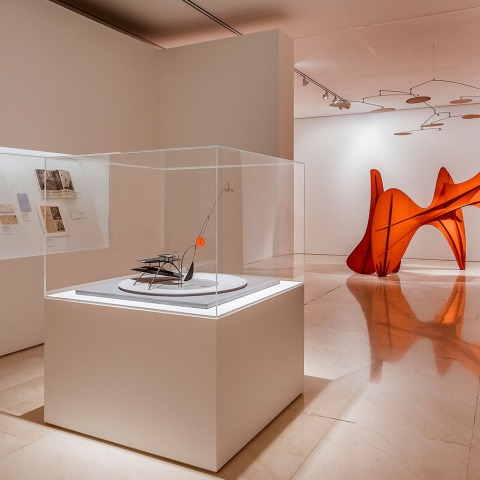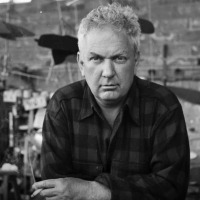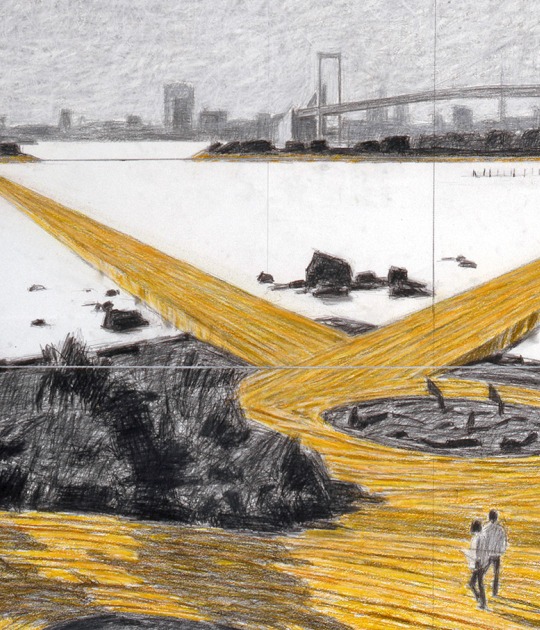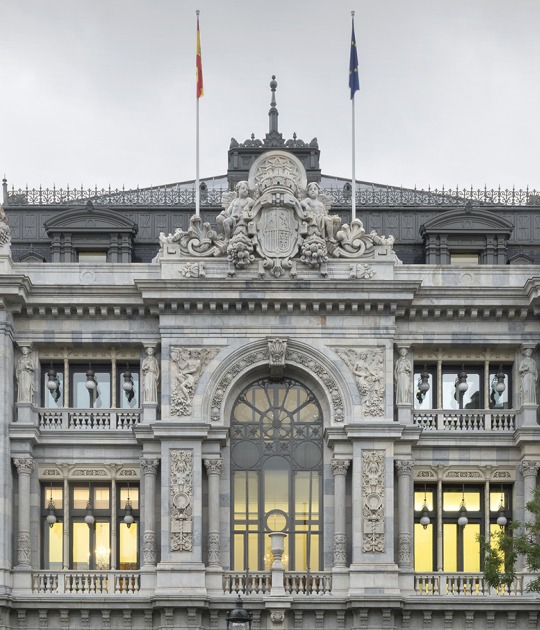Its architecture was a mere support for the viewer to understand the artistic dialogues.
They created a series of platforms on the floor or on the floor-wall to emphasize the works. With them, they fulfilled various functions: they define their own space for the work, they enhance the perceptual size of the work, they group together several works when necessary, they keep the public at a safe distance from the work and they create a play of shadows.
Project description by OOIIO Arquitectura
The exhibition is a creative dialogue between two greatest art masters of XXth century, Alexander Calder and Pablo Ruiz Picasso, when studying the void. But... how making an exhibition design about that? How to value art works of such importance so that they express what the artist who created them really intended to express?
The starting point for solving the delicate commission was to quickly understand that the artists were Calder and Picasso, not the architects who designed the exhibition. The proposed idea tries to create architectures that want to go unnoticed, to be a mere support to generate dialogues between pieces. The works of art that make up the exhibition are so good that the architectures organize them “only” have to know how to enhance what they express, put them in value. Being architects from silence and the background.
The intention was always to group all the works of art in “rooms” or “exhibition sets” that spoke of the same thing. The exhibition, although its main theme is essentially “the void”, is structured in several different moments and approaches that the artists had on the subject. The small and discreet architectures that organize the space, try to be the support of these groups so that the viewer, almost without realizing it, can better understand the specific artistic dialogues that the curators of the exhibition wanted to emphasize in each block.
Given the lightness of many of the works on display, one of the challenges was to give presence to objects that are almost invisible. In the exhibition there are several works that have been built with wires, which float from the ceiling without taking up almost space (this is what managing works that explore the void has to do). That is why in the exhibition design you can see discrete but resounding architectural elements such as a platform on the floor, or floor-wall, which underline these delicate works while fulfilling several functions at the same time:
Define an own space for the art work, ranking it, positioning it in the museum room; Enhance the perceptual size of the art work by making the observer psychologically understand the work + the platform as a whole; Intentionally grouping works; Keep the public at a safe distance, to avoid temptations; And a very interesting one, playing with the shadows. The platforms are also screened on which to cast the shadow of the work itself, discovering beautiful games between the object and its projection.
The void - filled that forms a sculpture on its exhibition platform, the space created around the pieces thanks to the simple architectures that emphasize them, magically also become part of the work of art.













































